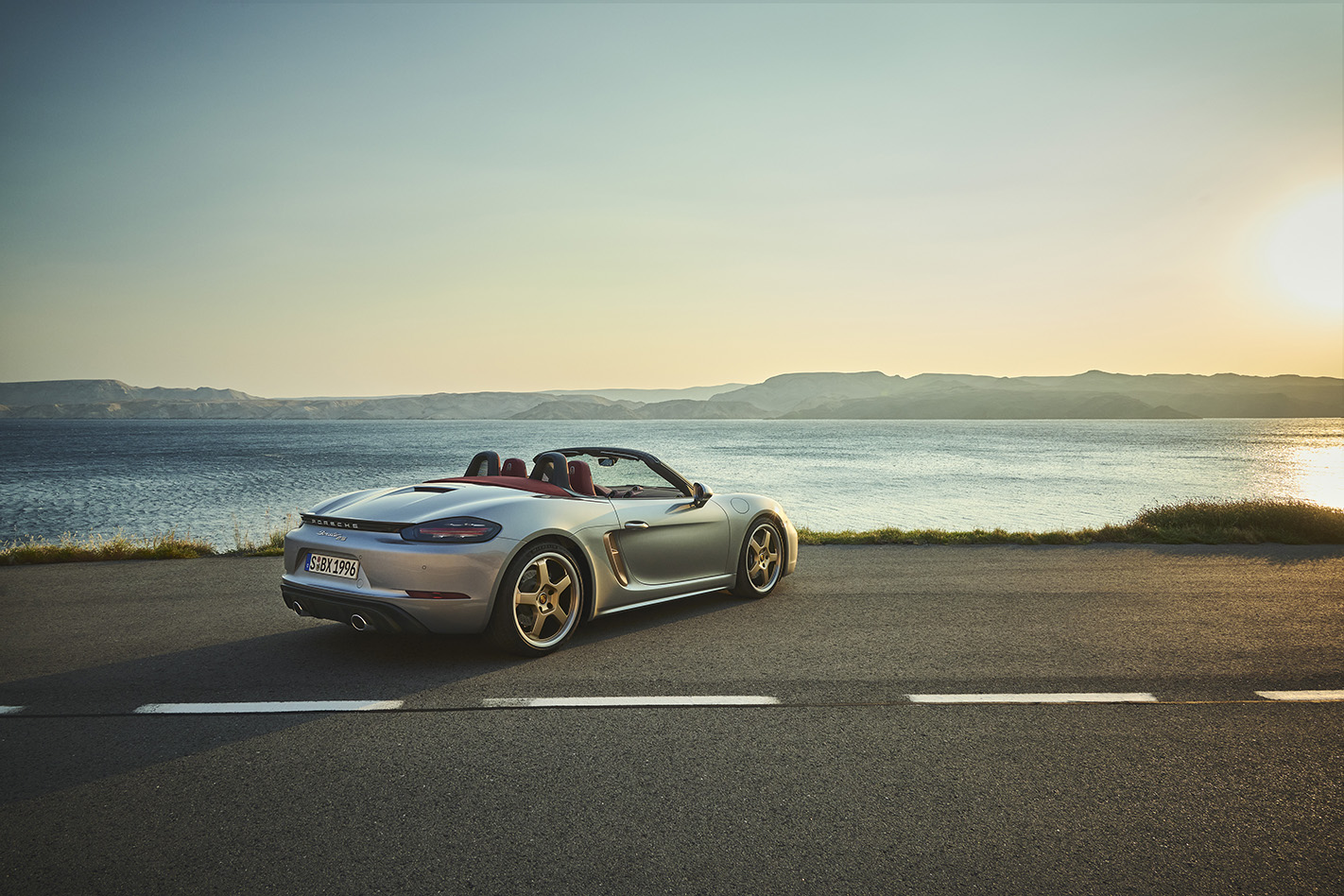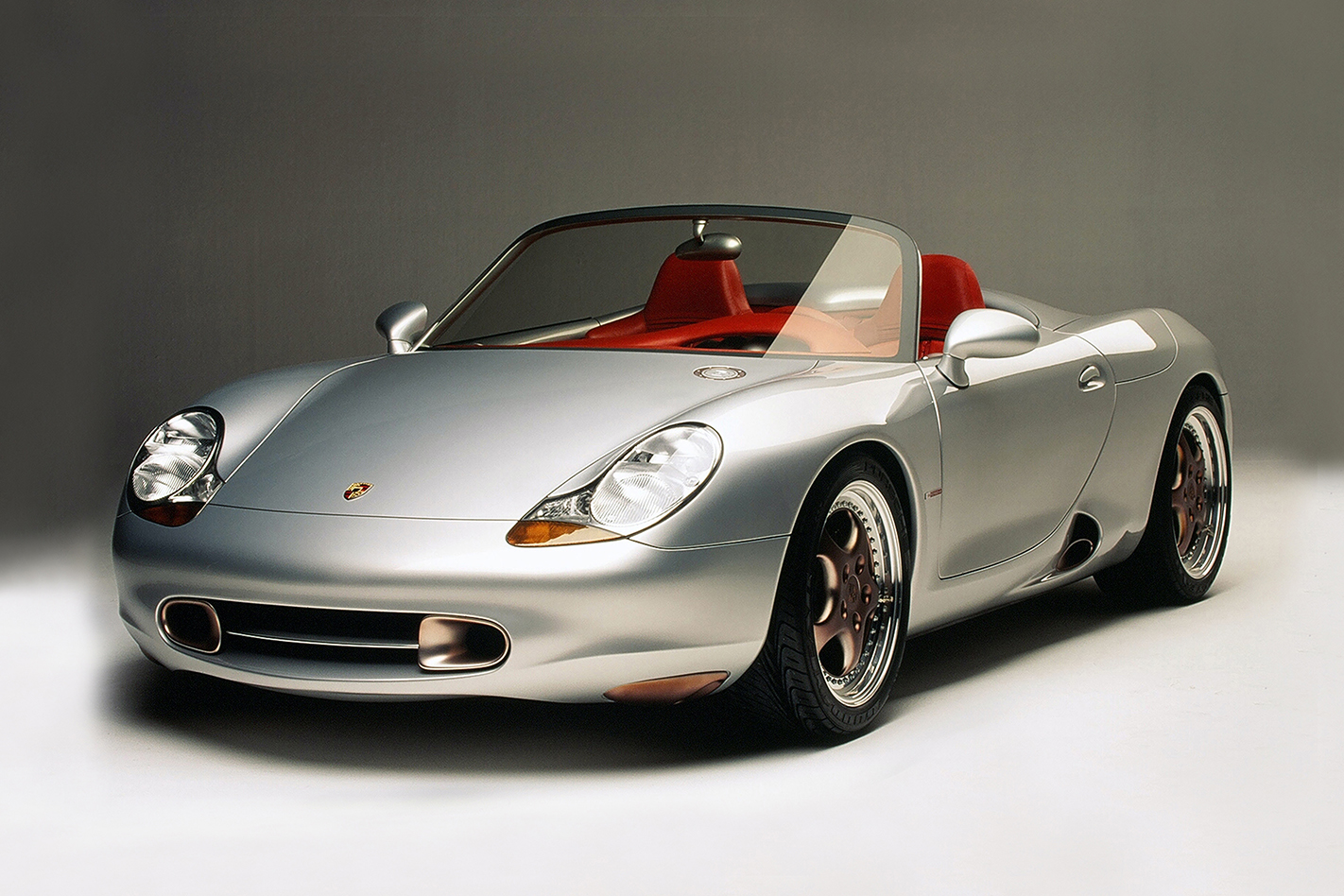In 1989, Porsche’s sales had dipped to just 15,000 units, and by 1995 the 993-generation 911 was its last surviving model. Common wisdom holds that the Cayenne SUV saved the company in 2002, but the model that actually started the turnaround arrived 25 years ago this year in 1996, in the shapely form of the Boxster.
The Boxster now feels almost as integral to the Porsche model range as the 911, and there’s no shortage of reference points to ground it in Stuttgart’s back catalogue, so it’s easy to forget just how radical it seemed when the first-generation 986 launched a quarter of a century ago.
It switched Porsche’s affordable sports car strategy from a front- to mid-engined layout and both influenced the upcoming water-cooled 911 (the 996) and helped make it far more affordable to produce, thus safeguarding Porsche the company.
There was no small amount of pressure on the team behind it, so the Boxster’s silver anniversary is a chance to learn more about the 986’s development first-hand.
Grant Larson is the American who designed both the concept and production car under the guidance of his boss Harm Lagaay. He remains with Porsche to this day. Period R&D boss Horst Marchart pitched the idea of an affordable mid-engined model in the first place, and is now retired.
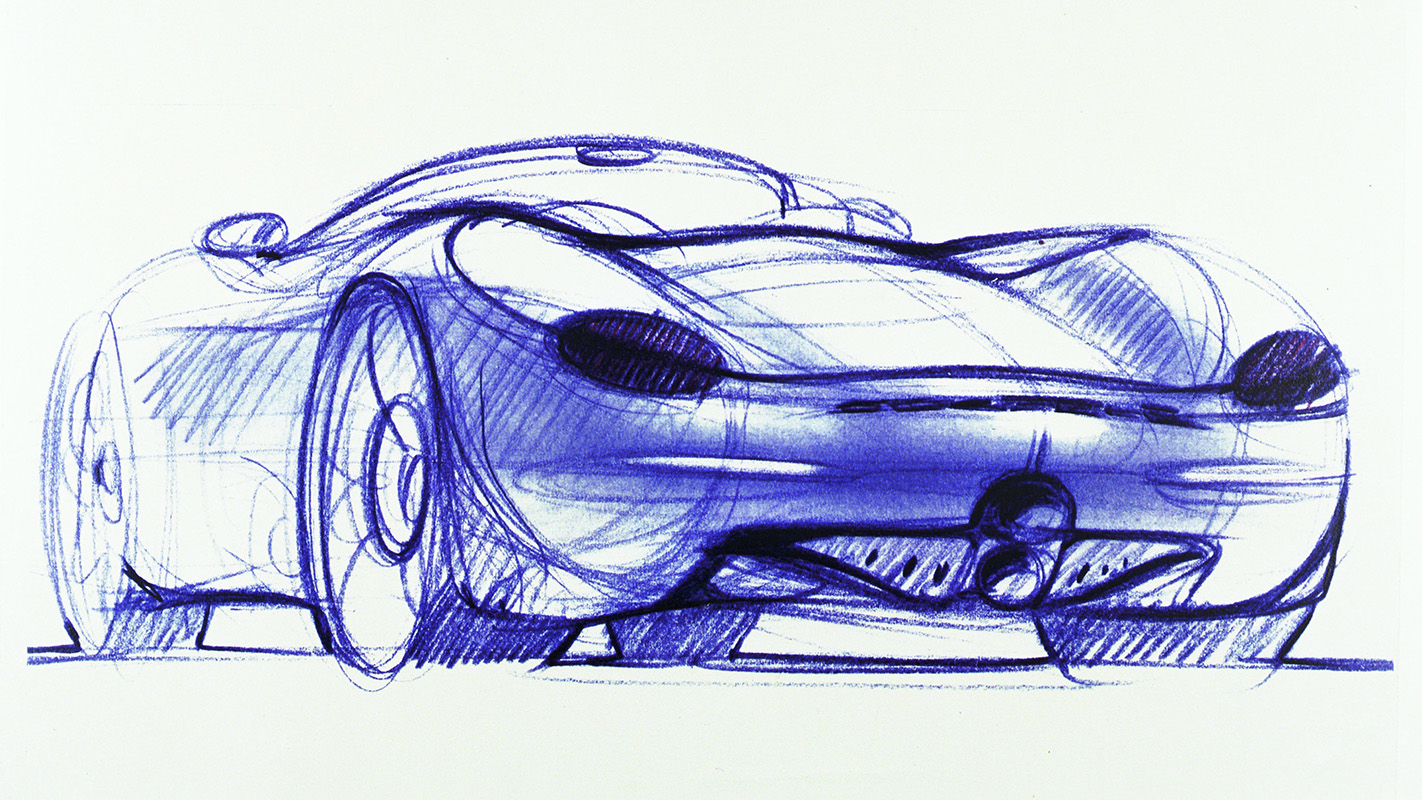
Porsche sales had plummeted from around 40,000 units a year to that low of 15,000 in 1989, as recession bit, its cars fell out of favour and the management team fluctuated and lacked clear direction. The 928 was ageing and expensive, and the 944 – and the 968 that replaced it in 1991 – wasn’t meeting sales expectations.
The costly-to-produce 993 was planned to have been complemented by the 989 [a four-door 911 that foretold the Panamera and was being developed under Ulrich Bez, later boss of Aston Martin], but then Horst Marchart was appointed to the supervisory board.
For Marchart there was a neat circularity to starting the Boxster project, as he’d originally joined Porsche in 1960 during 911 development. Later he moved to external third-party Porsche projects (Porsche worked on everything from hot Seat Ibizas to the Mercedes 500E) before eventually returning to the mothership in 1988 to become head of overall vehicle development.
“Three years later [in 1991] I was appointed a board member, but before that I had to tell the supervisory board what I wanted to do. The 928 was above the 911 in pricing, people weren’t purchasing them, and then the 989 was even above the 928 and 911,” he explains.
“We had to find the way to sell at least 30,000 units a year again. My idea was to go back to the roots. We didn’t have the Boxster yet, I just told the board we’re going to take the 911 and come up with a new car, which will have the identical front end, and what we are going to vary is the mid-engined concept.
“Of course that’s easier said than done, but we got it done.”
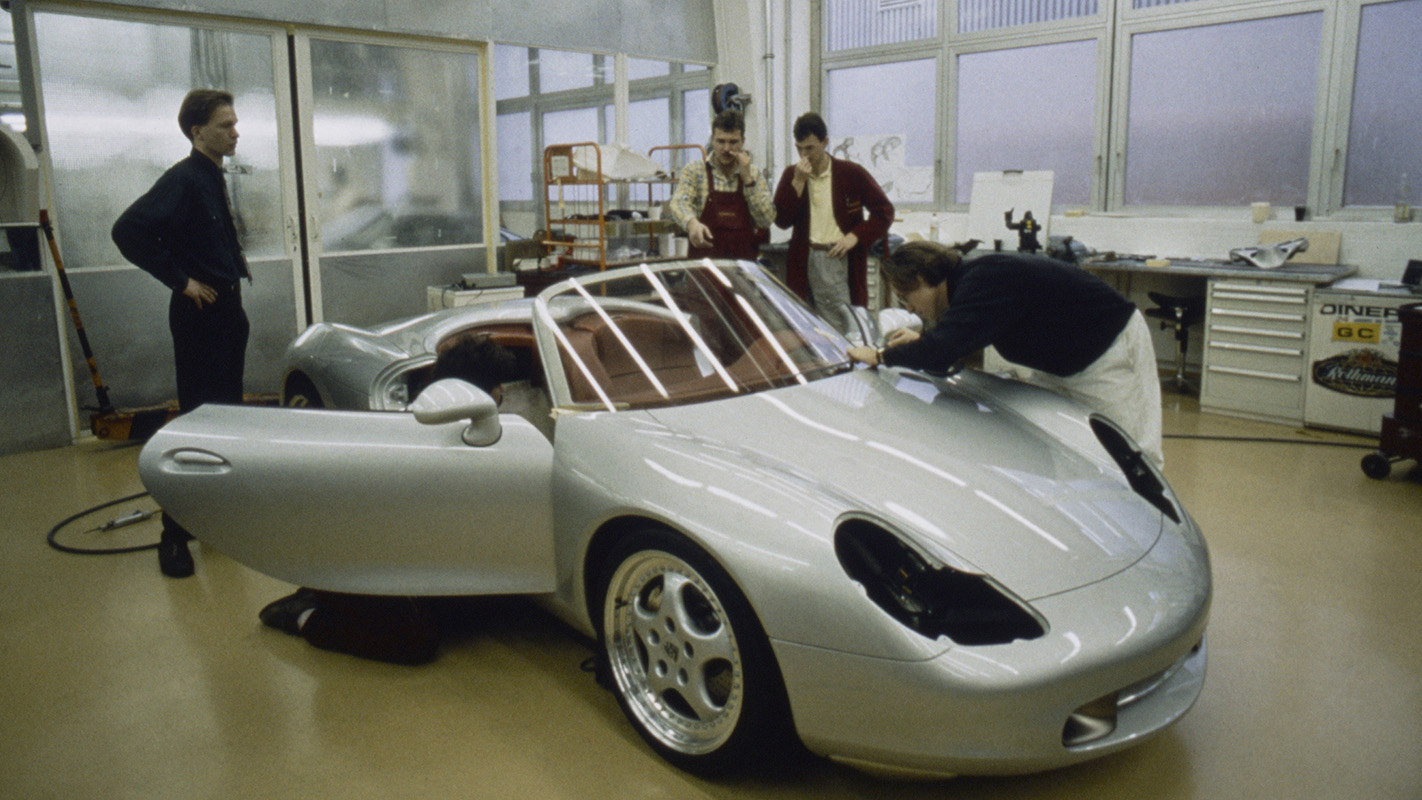
There was some internal resistance. Marchart recalls not everyone being convinced they were backing the right horse, and a senior employee suggested they should just do a more affordable two-seat version of the 911 instead, a kind of slightly different twist on the old 912 formula. The board, however, quickly approved Marchart’s concept.
The four-door 989 project was canned, and so a new strategy was developed, whereby the next 911 (the water-cooled 996) and the mid-engined Boxster were developed in tandem, with the two always intended to share around 50 per cent of parts to save costs (Porsche saved 30 per cent on the 911’s bill of materials) without compromising the 911’s technical specification – or halo status within the brand.
Porsche simultaneously re-organised the way it operated to improve efficiencies and internal communication – not just each department working largely in isolation, as had previously been the case, but in co-operation.
“When we started these two model lines, we set up 21 teams in development, but these were cross-functional teams from all departments,” explains Marchart.
Porsche also learnt lessons from the development processes and prototype tooling used by Japanese manufacturers, after a trip to Japan with management consultants McKinsey.
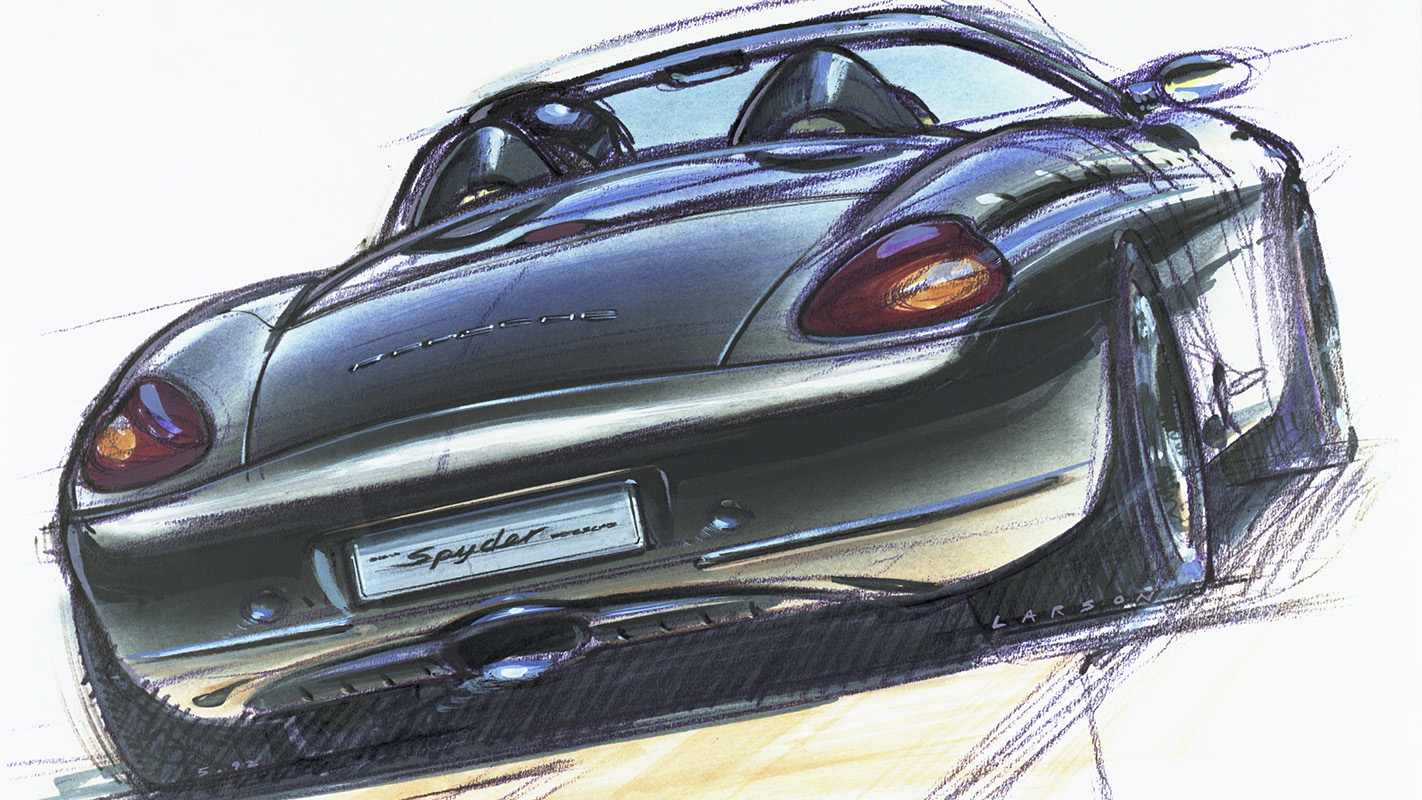
Grant Larson designed both the Boxster Concept and production car. He arrived from Audi aged 32 in 1989, after hearing that both Ulrich Bez and Harm Lagaay were leaving BMW to begin new projects at Porsche – even if Porsche’s reputation for conservatism preceded it.
“As a designer you always look at places where things are going on – at that time it was Japan, and there was less in Europe, and the least was happening at Porsche, which was known as a company that just facelifts a model for decades. My first project was a 944 facelift, which became the 968, as well as the 989,” he recalls.
“When we first started the Boxster we were a bit down, because the 989 had just been cancelled, around the middle or fall of 1991, but we knew something new was coming with the idea of the Boxster, and of course together with the 911 this was an exciting moment for us.”
Larson looked back at Porsche mid-engined models for inspiration, including the 550 that raced in the 1950s and its successor, the 718 RSK, though he also acknowledges the wedgier 914. The design process was more analogue back then for all car companies, but Porsche’s clay modelling was particularly artisan – rather than using coordinates, the clay modeller worked freehand from Larson’s sketches.
“I was really lucky to have an older gentleman, Peter Müller, with a lot of experience in clay modelling,” Larson recalls with barely concealed fondness. “He just said ‘give me a sketch’, so I plastered the walls with all these drawings, and of course talked to my boss, we put little red dots on each of the areas that we thought could become the new Boxster.
“And this guy looked at the drawings, and started sculpting the clay model with this thing that looked like a cheese grater and the car just sort of blossomed from his hands – not only from my sketches, but from his hands.”
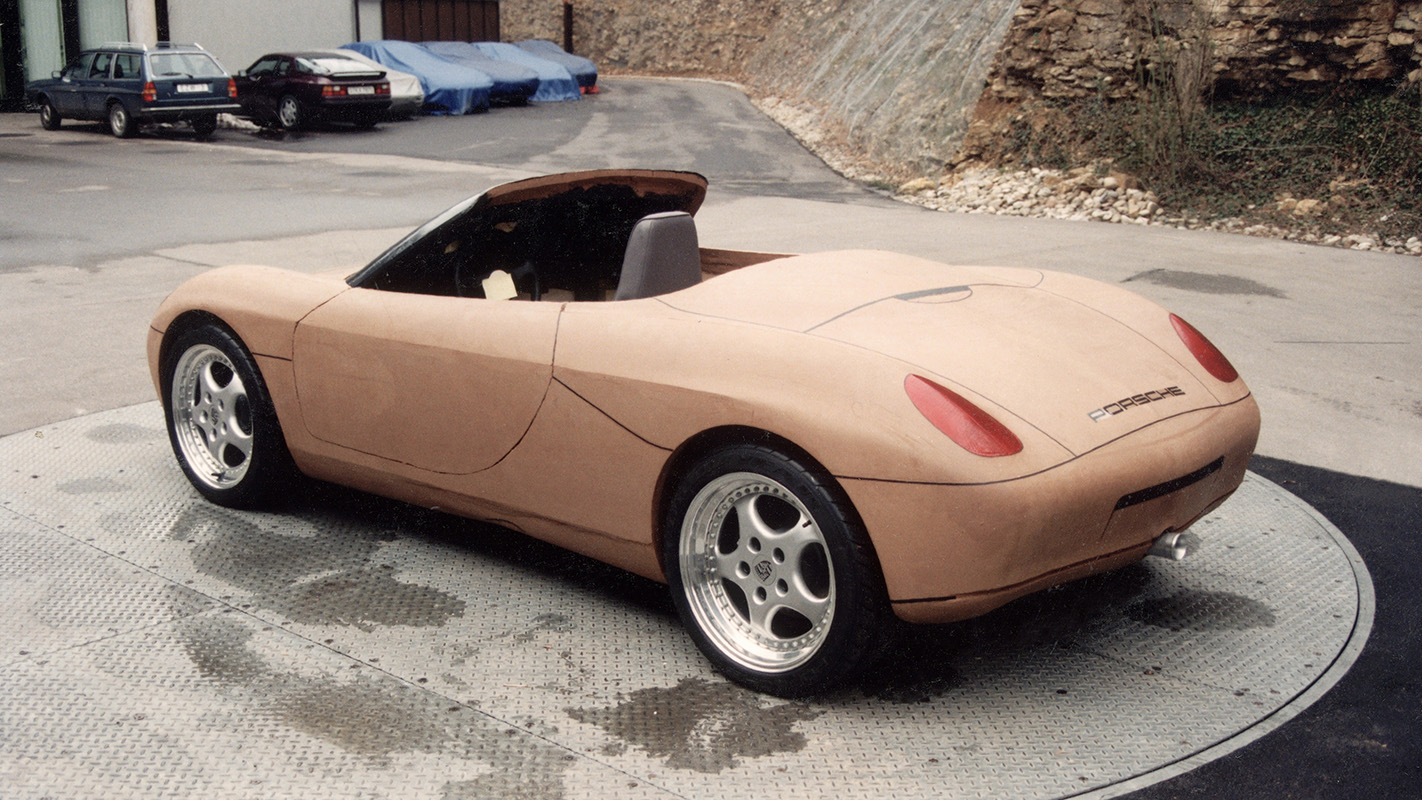
Larson describes the Boxster Concept as having typical mid-engined proportions – longer wheelbase, cab-forward design, sculpted fenders, low bonnet and low rear deck, plus sculpted sides that, at that point, weren’t constrained by the production realities of carrying over 911 doors. He’s particularly happy with the central exhaust, a wry nod to the original 550’s pea-shooter exhaust.
The concept interior was developed with Stephan Stark. “The idea was to bring more body colour into the car and have driver-oriented seating, so the car is basically asymmetrical with a tighter seating position with side bolsters that hold your hips,” elaborates Larson.
“There are all kinds of wonderful details – one of the most famous are the moving ventilator fans, which unfortunately didn’t make it into production.”
The Boxster Concept was revealed at the Detroit motor show in January 1993, because back then Porsche was exporting 60 per cent of production to the US, and needed to gauge reaction in its most crucial market. It went down a storm with potential buyers, journalists and the wider public alike.
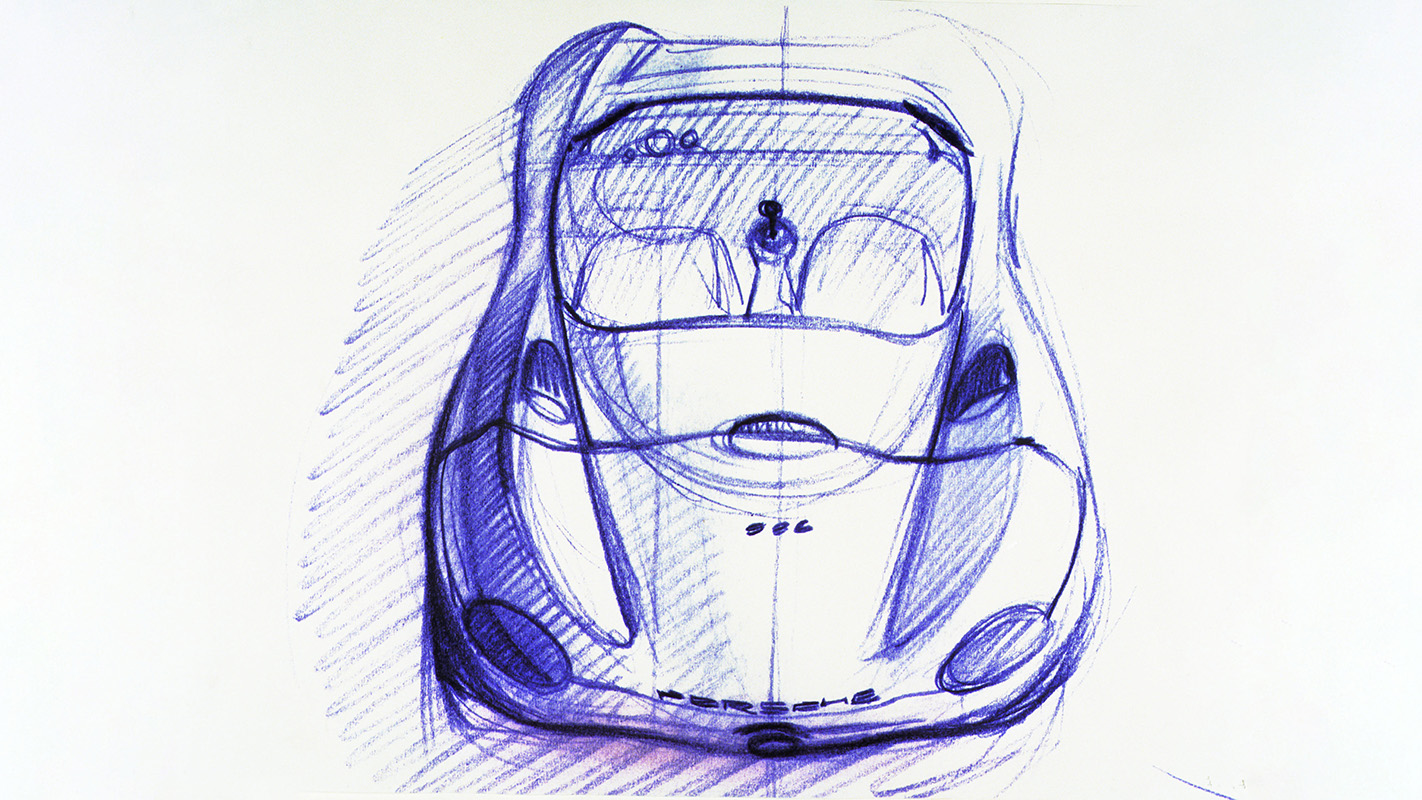
The design was scaled up around 10-15 per cent for production, which Larson downplays as ‘no big deal’, to provide more luggage space front and rear, and to accommodate radiators that came from the 996.
Roll-over hoops and a fabric hood were required, and air intakes were also moved up from the side skirts to the body sides.
The concept name – a portmanteau of ‘boxer’ and ‘roadster’ – was retained, and Marchart jokes it too was developed in-house, saving money on consultants.
Porsche initially planned to use an aluminium bodyshell, but the short time-scales meant it stuck with the steel structures with which it had more experience. Plans for a four-cylinder engine were even quite advanced.
“I was not too happy about that idea, but we definitely wanted to have a different output between these two models [the Boxster and 911],” recalls Marchart.
Thankfully the engineers had package-protected for six cylinders and when Audi submitted its quote for supplying engines, Marchart and his cost-savvy CEO Wendelin Wiedeking calculated it would be more cost-effective for Porsche to develop a flat-six shared with the 911, albeit turned through 180 degrees.
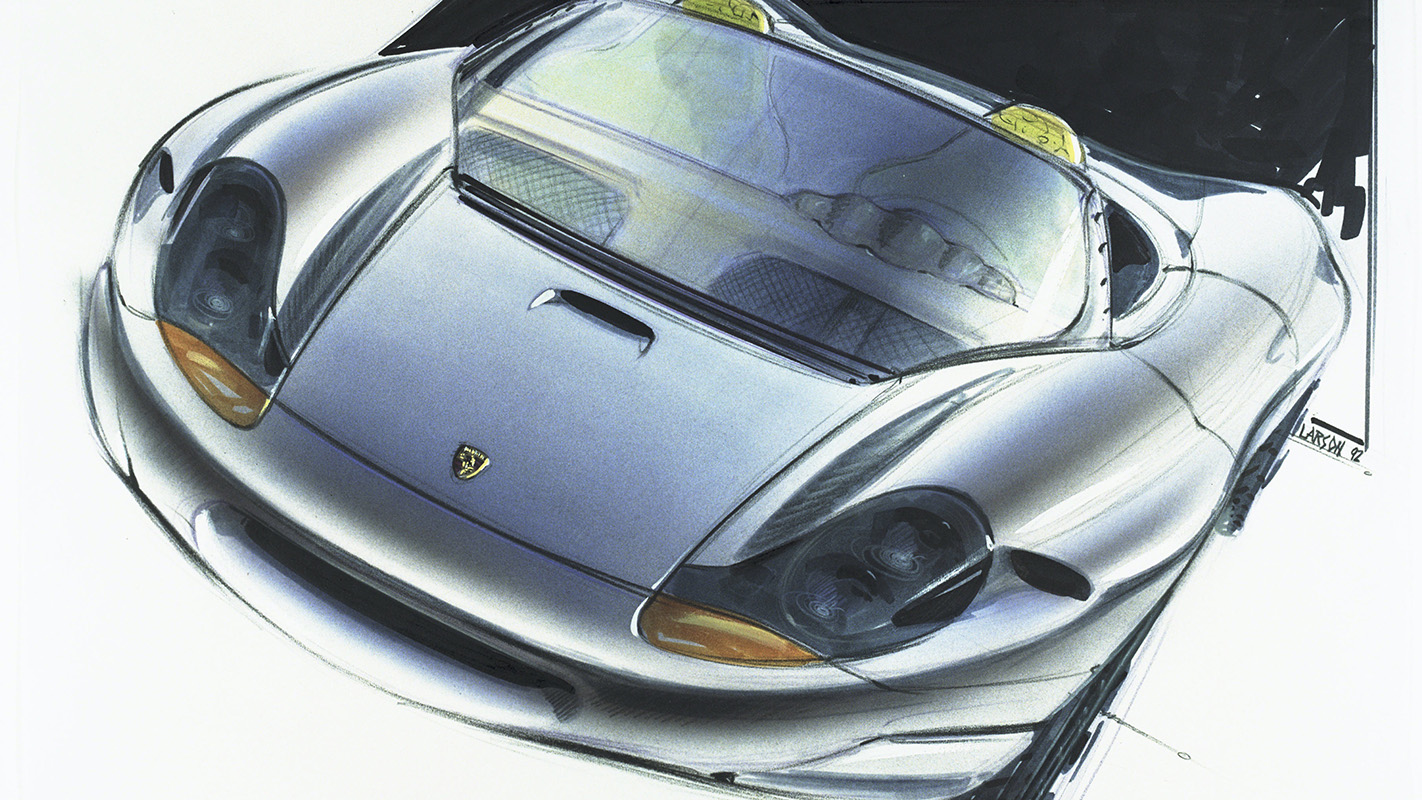
It would be Porsche’s first entirely water-cooled flat engine, the 959 supercar already having water-cooled heads. Having six cylinders also gave it a USP over the BMW Z1, another Ulrich Bez project, and the Mercedes-Benz SLK, which was on sale four years before a six was plumbed in.
In fact, it would take almost 20 years before the 718 Boxster switched to four cylinders, and we all know how well that went down, in large part because the M96 set such a benchmark.
The Boxster’s much lower price point and inherently better balanced chassis meant the new six-cylinder powerplant had to be de-tuned to save the 911’s blushes. “We knew from the beginning that the Boxster would be the faster car if it had the same power as the 996, that’s why the Boxster performance is lowered a little,” says Marchart.
The final specification of the new M96 engine was 2.5 litres for the Boxster with 150kW, versus a displacement of 3.4 litres with 220kW for the 911. But Marchart is frank in revealing this wasn’t always enough to mask the Boxster’s strengths.
“In curvy passages where the full power of the car is not required, the Boxster was able to convince, even compared to the 911,” he says, before giving the 911 a get-out-of-jail card by adding that “sometimes it is up to the driver which is fastest in the end.”
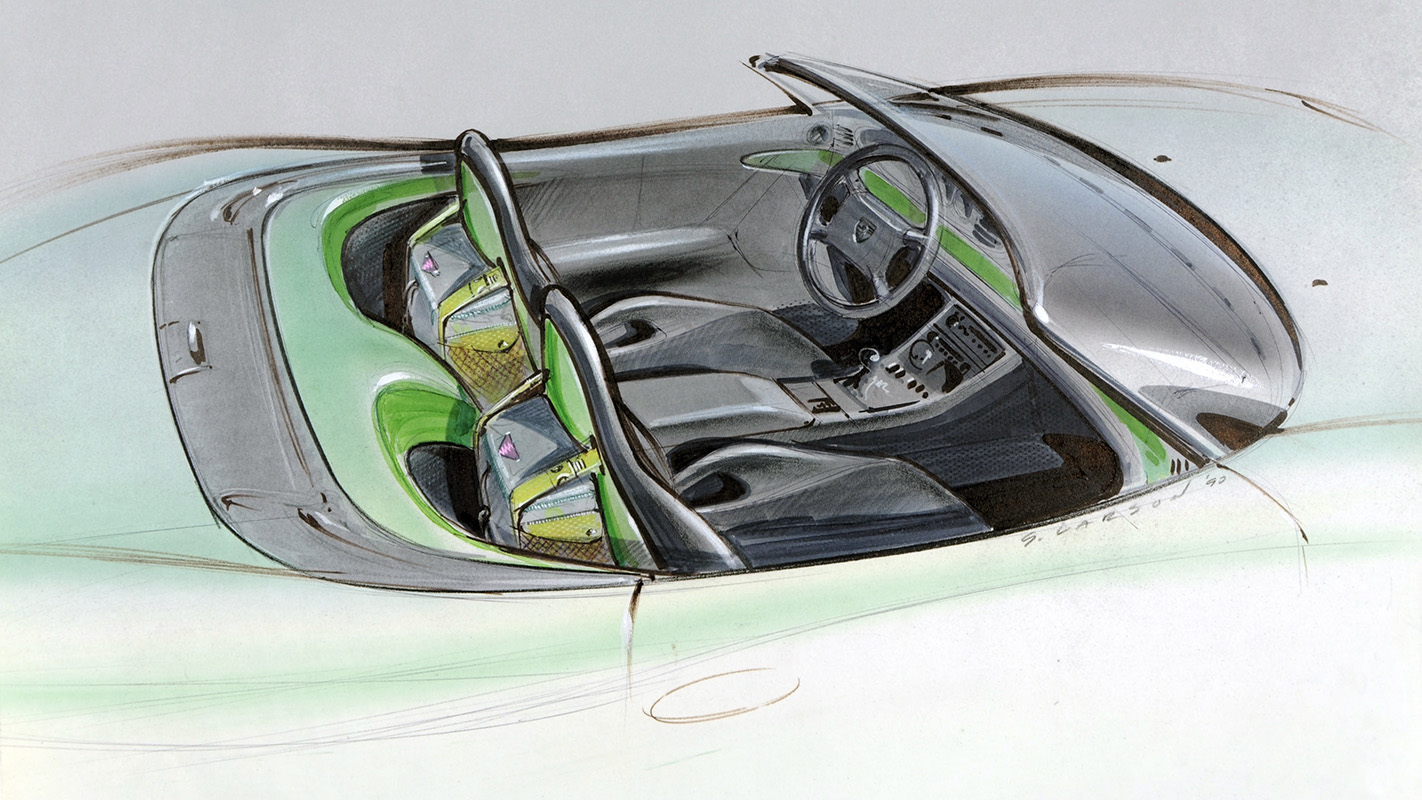
The bonnet, doors, wings and the position and rake of the (slightly lower) windscreen were always going to be shared between 911 and Boxster for production.
Other shared elements included the front suspension, and an interior that was largely similar, with the Boxster most obviously differentiated by having three rather than five dials in its instrument binnacle, and a more playful typeface.
But Porsche was still struggling to balance the books and was making some of its demoralised workforce redundant during Boxster development. Then, late in the process, the design team learnt that the Boxster’s (simpler and cheaper to produce) modular headlamps would be adopted wholesale for the 911, and the Boxster would use the 911’s front bumper, meaning the two designs would appear identical when viewed from the front.
The design team successfully fought the shared front bumper, though the first 996 911 did famously share the Boxster’s ‘fried-egg’ headlamps, prior to the 996.2 facelift, and the similarity between the two designs did prove to be controversial.
Throughout development, Marchart remembers just how hard employees worked, with some clocking out of work then coming back in to give up free time (at one point he faced a fine of around 50,000 Euros for irregular working practices), while Larson sums up the pressure both he and the wider design team faced.
“You think ‘how are we going to have a hit?’ because you have the responsibility of resurrecting the company,” he remembers.
“It was very important for us to make the best out of this opportunity and we put ourselves under a lot of pressure.”
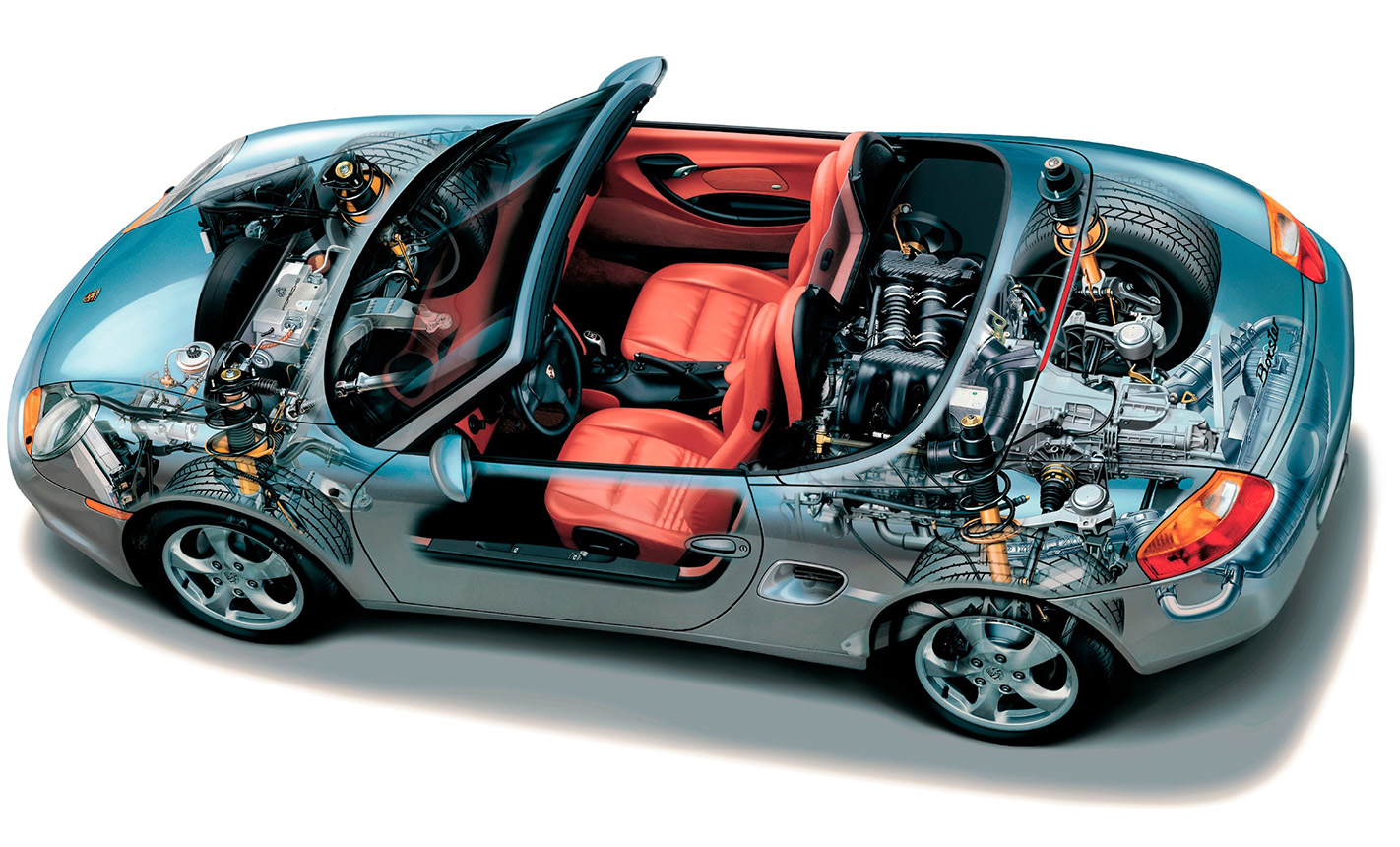
It certainly paid off: the Boxster did the business from its launch in 1996, and shifted an impressive 164,874 units until the second-generation 987 replaced it in 2004, outselling the 911 and only eventually being toppled by the Cayenne SUV.
“We had two model lines [with the Boxster joining the 993 911], which we felt would allow us to recover, and then one year later we launched a 911 [the 996] and then with the recovery of the economy we felt that we were out of the woods gradually,” recalls Marchart.
Twenty five years on, the Boxster might be a permanent fixture in the Porsche line-up, and still widely respected, but in the intervening years and with the success of the SUVs, many of us have forgotten just how crucial it was in kickstarting Porsche’s renaissance. And that very fact shouldn’t be forgotten.
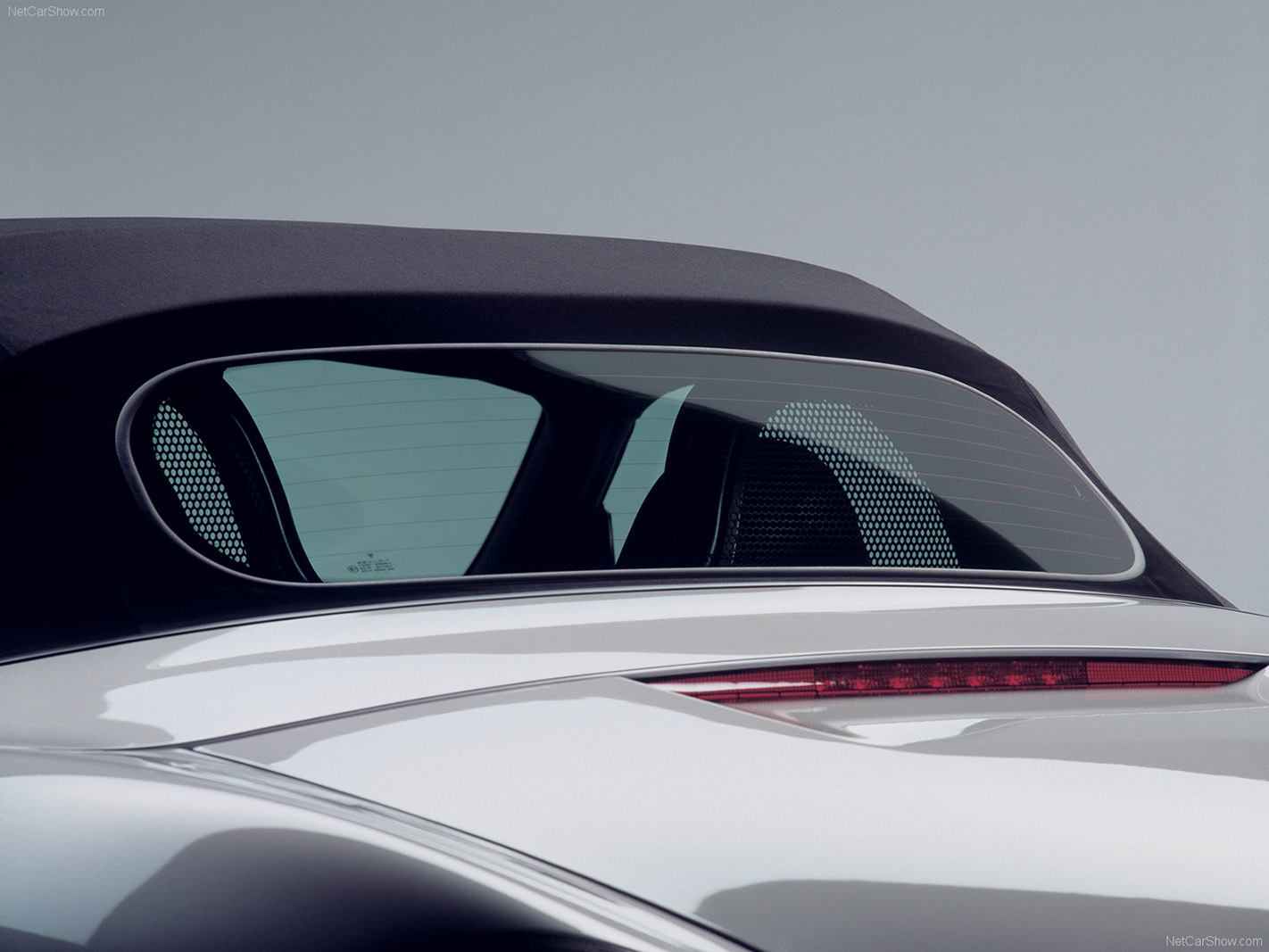
Three interesting Boxster facts
- Some 986s were built in Finland. Check the 11th digit of the VIN; if it’s a U, then it’s built in Uusikaupunki, while S stands for Stuttgart
- Famous for its air-cooled engines in 911s, the 986 Boxster was the first non-front-engined Porsche to be water cooled
- Part of the reason behind the 718 going to a four-pot turbo is packaging as the plumbing required for the 911’s boosted flat six doesn’t fit
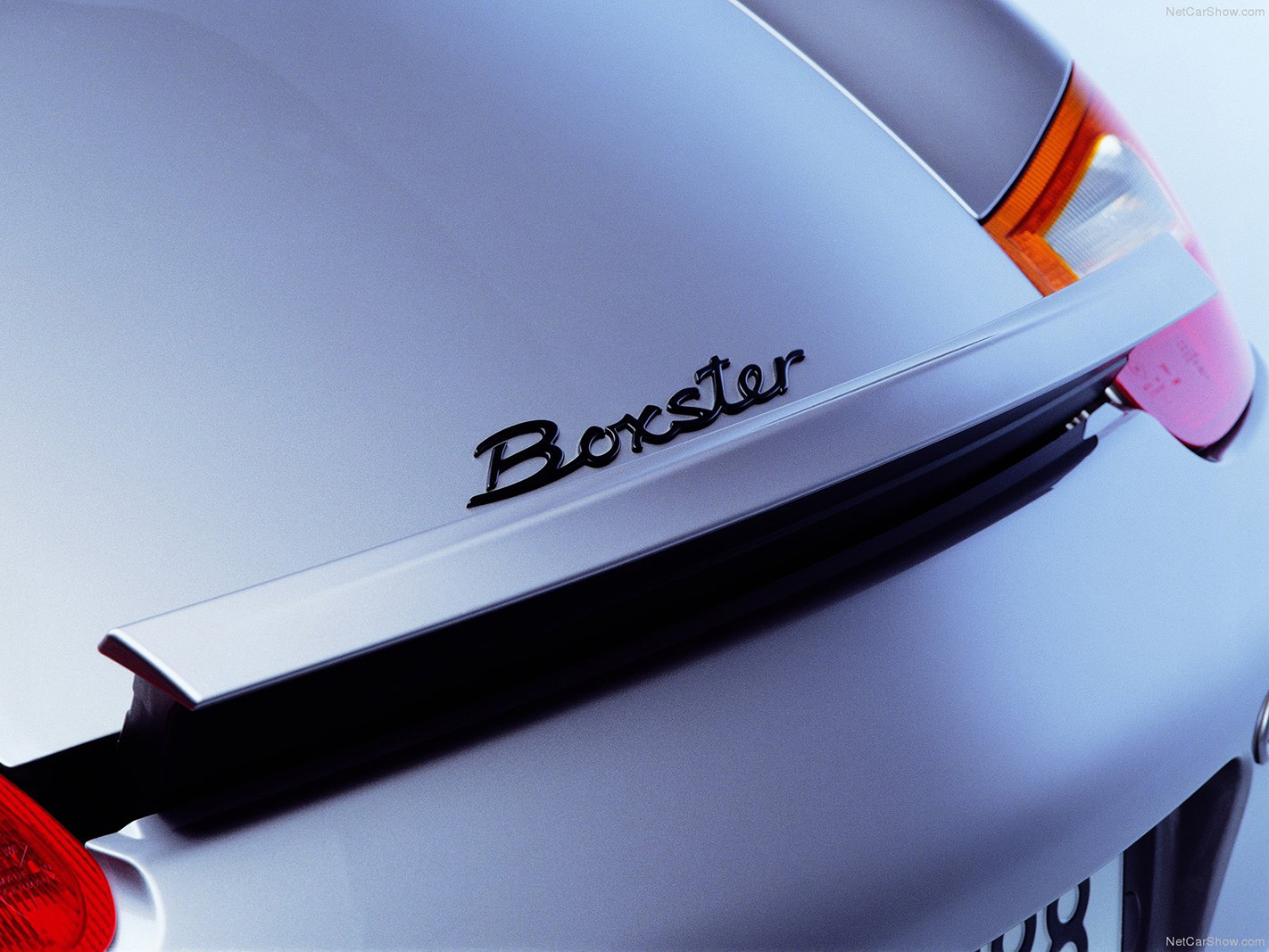
The benefit of sunny side up headlights
The Boxster’s ‘fried-egg’ headlamps might have been controversial, but they were pivotal to the cost-cutting masterplan, as designer Grant Larson explains.
“The modular headlamp was very important, as we were looking more and more at saving costs, and that saved us a lot of money, not only because of getting all the functions in one element, but also to make it very easy and faster to produce – especially faster to produce because time on the production line was also money.”
The headlamps were not initially intended to be shared with the 996 911, but cost pressures meant they were eventually adopted.

Fresh air and cooling headaches
Switching to water cooling nearly scuppered the Boxster’s rush to production and entire design – the idea was to have radiators in front of each front wheel, and suitable units were sourced for prototypes, but the supplier later said they were unable to make full production volumes.
“We had to come up with some new idea and design it as well and that was a really big issue,” recalls Marchant. “We feared we would have to do the entire styling over again because we would have been forced to change the front end, but thankfully we resolved the problem with the standard radiator and additional cooling concept.”
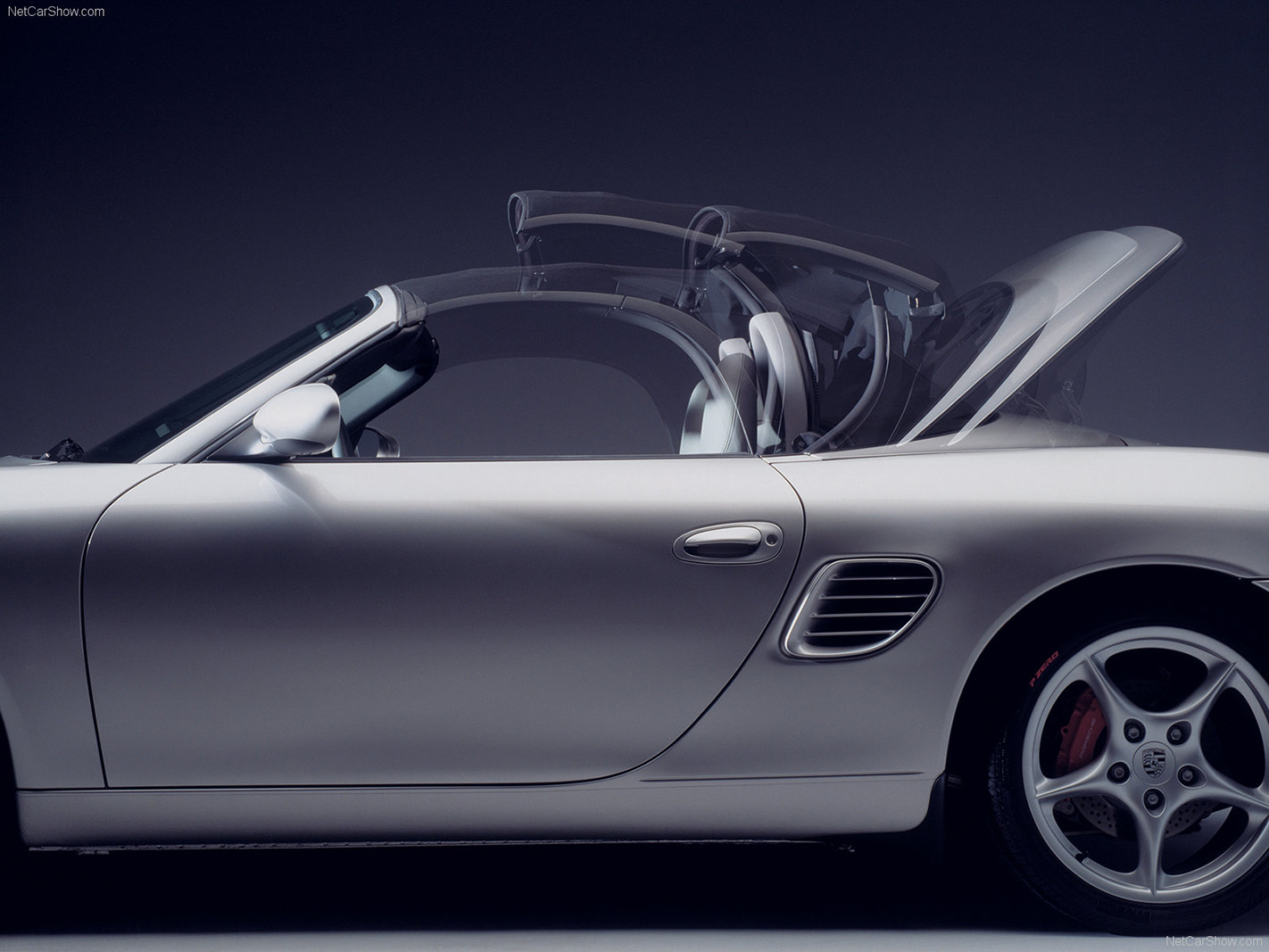
How the Boxster allowed Porsche to explore new and daring designs
Grant Larson explains the Boxster’s design mission, from past to present.
“Our goal was always to use the Boxster to take bigger developmental steps, as far as design and styling goes, whereas the 911 has always been very successful with its evolutionary track.
“So that’s our plan for the future, to take bigger and more daring steps. I have a pretty good idea as to what the next generation Boxster looks like because it’s on the measuring plate in our studio.”
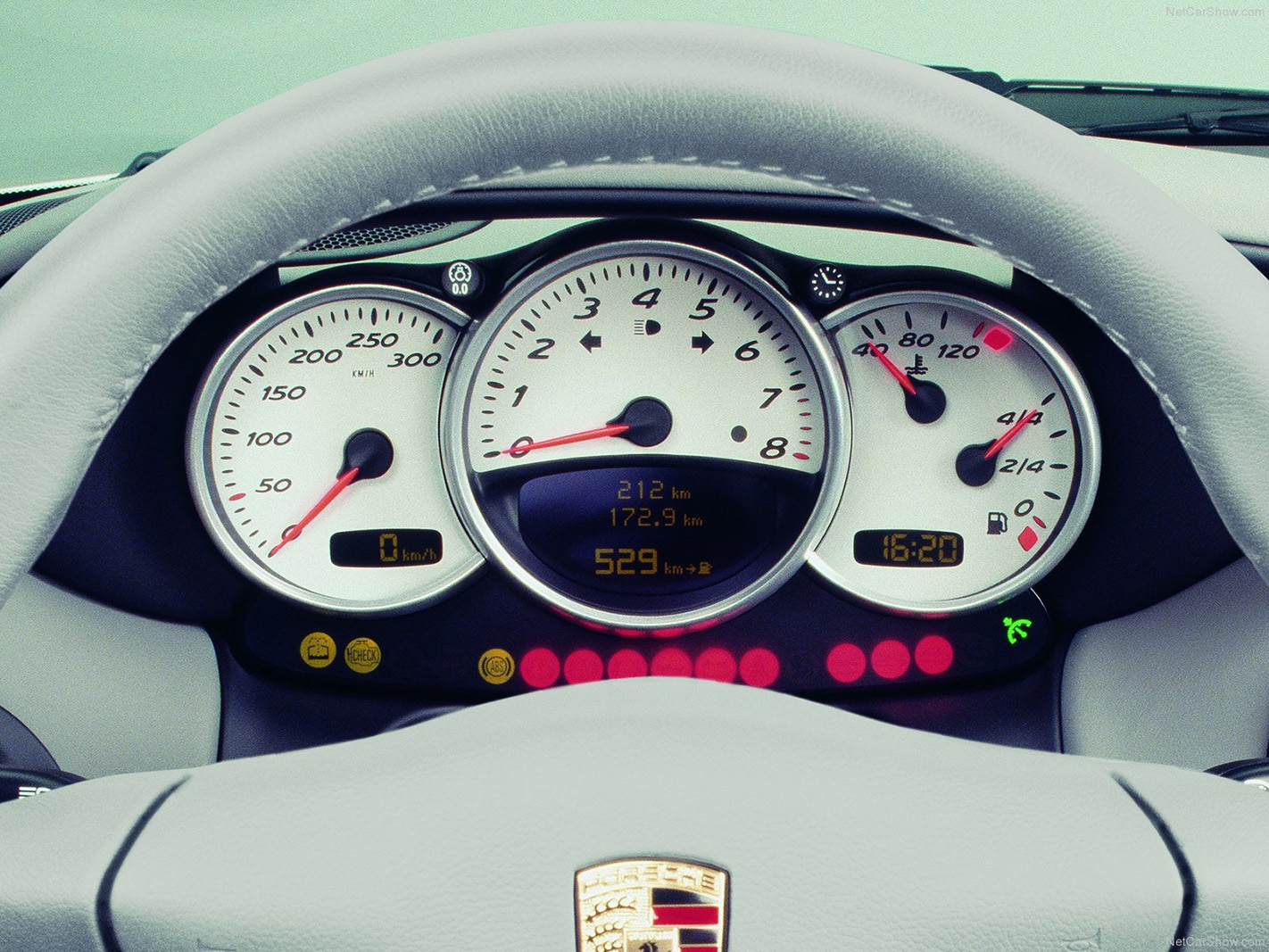
The Boxster family tree
986: 1996 – 2004
A sales saving grace for the company. Design inspired by 356 and 550 – crowned PCOTY champion in 1998
987: 2005 – 2012
Did away with 996 911-style headlights and gained a revised interior. Big news is the addition of the Spyder
981: 2012 – 2016
Standard Boxster gains new 2.7-litre flat six. New 3.4-litre GTS variant added to sit below 3.8-litre Spyder
718: 2016 – present
Introduced controversial four-cylinder turbo engines to the range. Acoustics aside, they are effective

Celebrating 25 years
To celebrate its quarter century, Porsche has given the Boxster some retro love. Taking inspiration from the original 1993 concept car, the aptly named Boxster 25 Years wears distinctive two-tone gold (Neodyme) 20-inch wheels.
Just 1250 examples will be available, and all are based on the Boxster GTS with the choice of a seven-speed PDK or six-speed manual.
It’s virtually mechanically unchanged, so the mid-mounted 294kW 4.0-litre flat six remains and sends its grunt to the rear wheels. Adaptive sport suspension and a mechanical LSD is standard. Inside the Bordeaux Red cabin harks back to the ’93 concept, with ‘Boxster 25’ motifs featuring on the folding roof, heated steering wheel and door-sill trims.
Deliveries begin in April to those who get in quick and stump up $183,900.
MORE: Boxster news and reviews MORE: All Porsche stories
